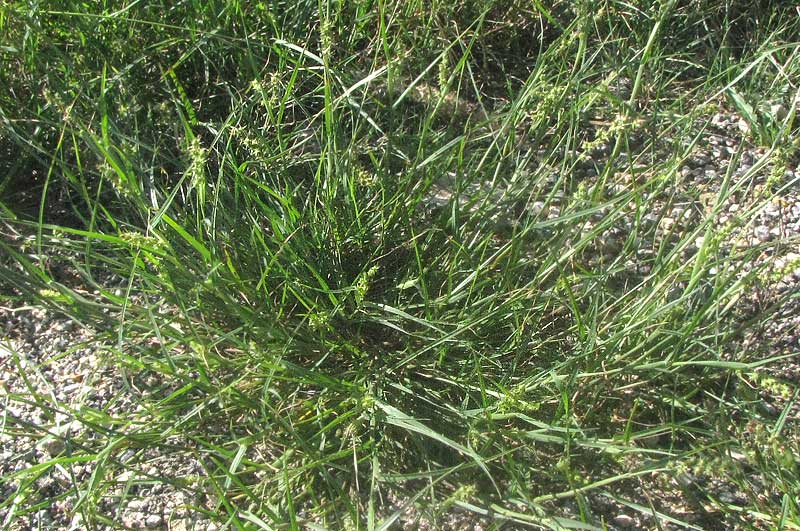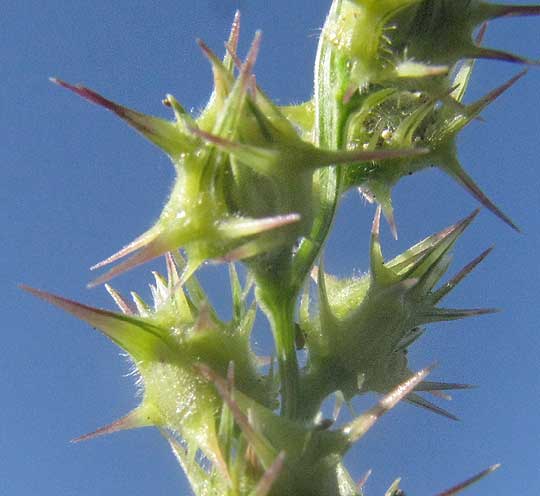Excerpts from Jim Conrad's
Naturalist Newsletter

from the October 27, 2013 Newsletter issued from the Frio Canyon Nature Education Center in the valley of the Dry Frio River in northern Uvalde County, southwestern Texas, on the southern border of the Edwards Plateau; elevation ~1750m (~5750 ft); N29.62°, W99.86°; USA
COASTAL SANDBUR
If you were with me during my Yucatan years you might remember an abundant grass on the beach that produced little burrs with spines that were awful to step on. You can see the grass on the beach north of Mahahual at http://www.backyardnature.net/yucatan/sandbur.htm.
That's Coastal or Southern Sandbur, CENCHRUS SPINIFEX, and along our roads and even in weedy lawns and gardens here you can find the very same species. Our plants grow less rambunctiously than along the Yucatan beach and tend to be less mat-forming, as you can see at the top of this page. A close-up of the sublimely spiny fruits is shown below:

Coastal Sandbur is native throughout the warmer parts of the Americas, from the southern US to South America, plus it's been introduced in most other tropical and semitropical countries, where in general it's considered a plague, not only by barefoot naturalists but also livestock whose mouths and guts are damaged by the spiny burrs, and sheep whose wool collects them. In southwestern Texas we can look for four sandbur species, but this one is the most commonly encountered.
If you know your grass flower anatomy, sandbur "fruits" will confuse you. The spines arise from a kind of partially open "cupule" formed of fused bristles below the spikelets. Visualize the bristles below each spikelet of foxtail or bristlegrass, fuse them together, partially cover the spikelet with them and develop spines on the resulting little cup, and you have the spiny covering of a sandbur burr. A more or less typical spikelet hides within this covering.